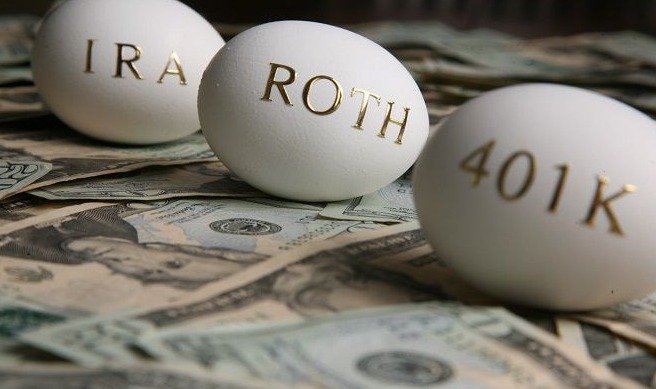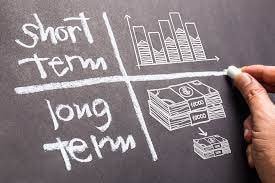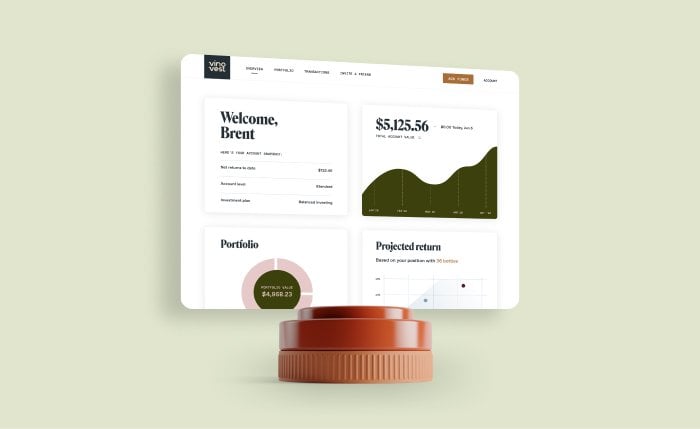Long Term Investment: Tips, Strategies + Best Assets to Invest In
Long-term investing is one of the best ways to secure your financial future.
It focuses on time in the market, rather than timing the market.
But, deciding on a long term investment strategy and picking the right assets is challenging.
Don’t worry. We’ll simplify things for you!
Let’s explore what a long term investment is, two investment strategies you can try, which profitable investments (like fine wine) to add to your portfolio, why you should include long term investments in your portfolio, and more.
Further reading
- Looking for various ways to build a profitable portfolio? Boost your returns with these 8 Investment Portfolio Strategies.
- If you want tips on how to invest in an asset like wine, check out this Fine Wine Investment Guide.
What Is a Long Term Investment?

A long term investment involves putting your money into assets that you intend to hold for more than a year.
Typically, the value of most assets appreciates in the long run. But, there could be some market downturns and price fluctuations along the way.
So, being a long term investor means you’re willing to accept the high risk for potentially higher rewards.
2 Long Term Investment Strategies You Should Try

Here are the long term investing strategies you should check out:
1. Active Investing
Active investing involves frequently trading assets to beat a key benchmark like the S&P 500. With this strategy, a fund manager regularly buys and sells securities in response to changing market conditions.
2. Passive Investing
Passive investing is a hands-off, buy-and-hold strategy for the long term. This also means you don’t need to manage your portfolio actively.
The most common passive investing strategies are:
- Index investing: Involves constructing an investment portfolio that tracks the performance of a market index. For example, an index mutual fund or ETF tracks the performance of an index like the S&P 500.
- Buy and Hold Strategy: Involves buying securities and holding them for a long time regardless of market fluctuations.
- Dollar Cost Averaging: Involves automatically investing small amounts on a pre-set schedule — regardless of the stock market performance. This method helps you smooth out the uncertainties of short term volatility by allowing you to buy fewer shares when prices rise, and more shares when prices decline.
Which long term investments should you put your money into?
10 Promising Long Term Investments to Explore in 2023
These are the best investments that deserve a spot in your portfolio:
- Collectibles Like Fine Wine
- Real Estate
- Dividend Stocks
- Treasury Inflation-Protected Securities (TIPS)
- Bond Funds
- Retirement Accounts
- Growth Stocks
- Value Stocks
- Stock Funds
- Real Estate Investment Trusts (REITs)
1. Collectibles Like Fine Wine

Investing in collectibles like fine wine is a brilliant way to hedge against inflation, a stock market crash, interest rate hikes, or any other downturn in the financial markets.
For instance, during the Covid-19 recession, fine wine only fell -1.4%. Meanwhile, the Dow Jones plummeted -22.7% and the S&P 500 dropped -19.6%.
And because fine wine isn’t affected by market volatility, it carries less risk and usually yields a higher return. For instance, it produced about 26% returns on investment during the 2008 Great Recession, while stocks dropped by 52%.
Interestingly, investment wines outperformed the Global Equity Index by 1.88% annually over the last 15 years.
This means fine wine can be an excellent investment for an institutional investor or any individual investor.
But how do you invest in an asset like fine wine?
Vinovest — an incredible AI-powered platform that helps you buy, store, and sell the world’s finest wines easily.
Vinovest stores your wines in climate-controlled bonded warehouses that don’t charge excise duty or VAT. They will even ship it to your doorstep in case you want to uncork your bottle. You also get 100% ownership of your wines.
2. Real Estate

Real estate can be an excellent long term asset worth adding to your portfolio. It has a low correlation to the stock market and usually performs well during economic downturns.
But investing in real estate can be quite costly and complicated.
When buying property, you have to research, find a solicitor, and then apply for a mortgage. And when it’s time to sell the property, you must find an agent and ensure the property is well-maintained.
3. Dividend Stocks

A dividend is the stock of a company that regularly pays a portion of its earnings to investors.
Investing in a dividend stock in the long term can be an excellent way to diversify your portfolio. But, finding the best dividend-paying stock requires time and thorough research.
4. Treasury Inflation-Protected Securities (TIPS)

TIPS (Treasury Inflation-Protected Securities) refers to government-backed bonds sold by the US Treasury.
The interest rate on fixed-income securities like TIPS is tied to inflation. This means the bond’s interest rate increases during high inflation periods.
Although TIPS are an excellent inflation hedge, they’ll usually protect your portfolio from a loss but may not guarantee high returns.
5. Bond Funds

A bond fund is a mutual fund that invests in various bonds.
Although a bond fund is excellent for portfolio diversification, its value is usually affected by interest rate fluctuations.
6. Retirement Accounts

A retirement account refers to a long term savings account to which you can regularly contribute a portion of your income.
Some best retirement accounts in the US include the 401 (K) and the Roth IRA.
The best thing about retirement accounts is that most of them usually come with tax benefits. For example, the contributions and earnings on your Roth IRA savings account will grow and can be withdrawn tax-free after the age of 59 and a half.
7. Growth Stocks

Growth stocks are publicly traded shares that typically grow at higher-than-average rates. But these stocks are usually quite volatile and often don’t pay out dividends.
8. Value Stocks

Value stocks are company shares that trade at lower prices compared to the company’s earnings and dividends.
These assets can be excellent for retail investors or anyone who wants to hedge against rising interest rates. That’s because value stocks usually perform well when interest rates rise.
But just like any other stock, value stocks are volatile and usually underperform during economic downturns.
9. Stock Funds

A stock fund refers to a mutual fund that invests in a collection of stocks.
In most cases, a stock fund carries less risk than buying individual stocks. But, you should research first and choose an investment fund that invests in profitable stocks.
10. Real Estate Investment Trusts (REITs)

A real estate investment trust (REIT) is a company that buys and owns income-generating real estate.
A REIT allows you to invest in real estate without managing or taking direct ownership of it.
REIT investments can be quite volatile because they’re affected by the state of the economy.
For example, an economic downturn could lead to a decline in rent payments and property values. This would lead to reduced income and low investment returns.
We’ll give you more reasons why you should consider long term investments.
Why You Should Include Long Term Investments In Your Portfolio

Long term investments can be an excellent option for anyone who’s serious about building a profitable portfolio — provided you pick your long term asset classes wisely!
Here are some of the benefits of investing in the right assets in the long term:
- Potentially high returns in the long run: Investing in assets like fine wine and real estate often yields high returns despite the state of the economy. Meanwhile, investing in volatile assets like stocks is too risky because these investments are affected by economic downturns.
- Tax Advantages: A majority of long term investments come with tax advantages. For example, when investing in fine wine through Vinovest, your wines are safely stored in bonded warehouses. In this case, you won’t be charged excise duty or value-added tax (VAT).
Meanwhile, retirement accounts like Roth IRAs also offer tax advantages to long term investors.
- Time and Cost Savings: Long term investing allows you to put your money into assets and watch them grow in value over time. This means you won’t have to waste your time and money on managing your portfolio from time to time. Also, most long term investing strategies come with low transaction fees.
- Compound Interest Benefits: Compound interest is generated when you reinvest your returns. As a long term investor, you have the freedom to reinvest dividends and capital gains. This makes it easy for you to buy more shares and gain compound returns in the long term.
What’s the difference between long and short term investments?
Short Term vs Long Term Investment

A short term investment involves putting your money into securities or assets (like stocks) for a short period — usually from 3 months up to a year.
Here’s the difference between long and short term investing:
1. Risk Profile
Unlike most long term investing strategies, short term investing usually exposes you to market fluctuations. That’s because the value of stocks and other securities usually fluctuates rapidly within the short term.
2. Investment Goals
Short and long term investments cater to different goals.
For example, a short term investment can be worth it if you want to sell your assets in the near future for immediate needs like a wedding or a home renovation.
Meanwhile, a long term investment is an excellent option if you want high returns in the long run. Think retirement funds, buying a new home, or funding your child’s master’s degree.
Let’s now check out some long term investing tips.
7 Fail-Safe Tips for Starting Your Long Term Investment Journey
These tips can help you avoid any missteps in long term investing:
- Familiarize Yourself With Investment Risks
- Consider All the Fees Involved
- Set Your Goals and Establish a Budget
- Understand Your Time Horizon
- Pick the Right Investment Strategy
- Pick Assets That Will Diversify Your Portfolio
- Keep Track of Your Progress and Review Your Strategy Regularly
1. Familiarize Yourself With Investment Risks

The best way to understand investment risk is to research various assets and speak to a financial advisor.
A high investment risk usually leads to a higher return.
For example, you can expect steady returns of 6%-15% in the long run if you invest in fine wine. Interestingly, Liv-ex (a global marketplace for fine wine trading) indicates that fine wine yielded 13.6% annualized returns over the past 15 years.
On the other hand, returns from safe investments like cash deposits and bonds will be lower.
For example, the average annual bond returns are typically around 5.9%. And as for cash investments, the average interest return on a savings account is roughly about 0.1%.
2. Consider All the Fees Involved

Before making an investment decision, you need to know all the fees involved because they can eat into your profits.
For example, when investing in ETFs and mutual funds, you’d usually have to pay management fees and an annual expense ratio (the annual percentage charged on your total investment).
Additionally, you’d have to pay trading fees every time you buy and sell ETFs, stocks, or mutual funds.
And if you seek investment advice from a financial advisor or any other financial professional, you’d have to pay them for their service. In most cases, a financial professional will charge you a 1%-2% annual management fee.
3. Set Your Goals and Establish a Budget

You need to set clear goals before you start investing. For example, maybe you want to invest for retirement or to pay for a college education.
You also need to pick the right investment account (brokerage or retirement accounts, for instance) that matches your financial goal.
Then calculate the management fees involved and establish a budget.
4. Understand Your Time Horizon

Your time horizon is the period for which you’ll hold your investments before you need the money.
It should be in line with your investment goals.
Ideally, you should hold your long-term investments for at least three years. But you can keep your assets for much longer, depending on your financial goal and risk tolerance.
5. Pick the Right Investment Strategy

When it’s time to pick a long term investment strategy, remember you can either choose an active or passive investing method.
The option you pick will depend on your investment goals, time horizon, and risk tolerance.
6. Pick Assets That Will Diversify Your Portfolio

Investing in various assets can boost your returns and reduce your investment risk.
You can diversify by adding fine wine, an index fund, stocks, mutual funds, and other assets to your portfolio.
And if you’re struggling with asset allocation, you can seek investment advice from asset managers or any financial expert.
7. Keep Track of Your Progress and Review Your Strategy Regularly

As a long term individual investor, it’s often best to check your investment performance at least once a year.
If things aren’t working out, consider switching to a different long term investing strategy. You may also consider some asset allocation and swap underperforming assets with profitable ones.
Start Your Long-Term Wine Investing Journey Through Vinovest

Investing in the long term involves a high level of risk and requires patience. But the returns are usually quite impressive.
And if you want to build a solid investment portfolio, then it’s worth considering profitable long term assets like fine wine.
Visit the Vinovest website today to buy, store, and sell investment-grade wine bottles from across the globe.



